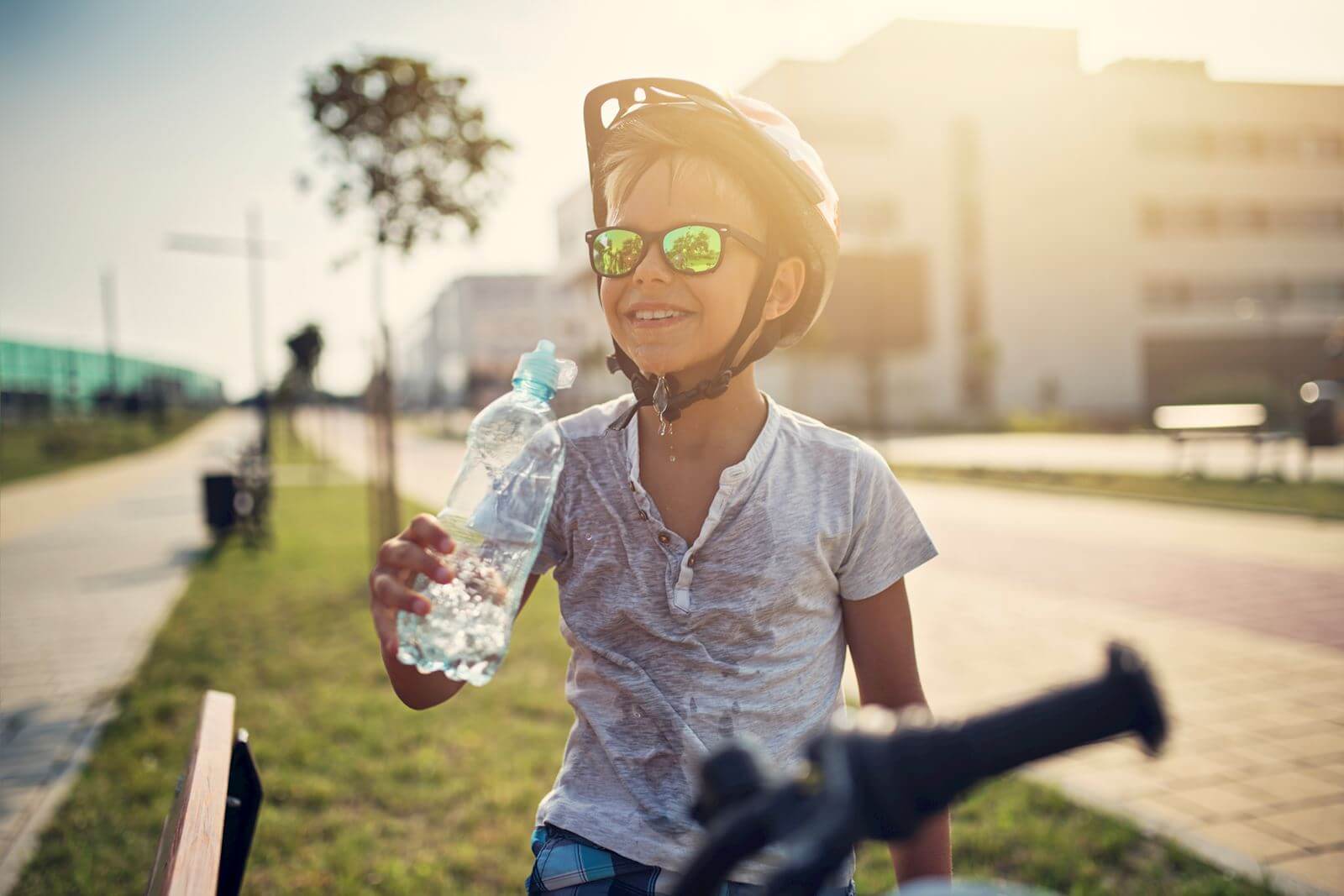While heat poses a risk, the real threat comes with high humidity. Listen to your body and watch for telltale signs of those around you.
Posted
by Featured Provider Matthew Sutton on Thursday, June 3, 2021

As temperatures rise and outdoor activities beckon, you may be tempted to seize the summer and go-go-go. Before you head outside, though, brush up on these warning signs for heat-related conditions like heat exhaustion and heat stroke.
Who is at the greatest risk for heat emergencies?
Unfortunately, it doesn’t matter if you’re a pro athlete or an avid gardener. Heat-related illnesses can come on quickly and take a toll no matter your fitness level or age.
“Usually we worry about the very young and the very old,” says Dr. Matthew Sutton, MD. “However, anyone of any age is potentially at risk for heat-related illnesses.”
Young children, especially babies, don’t know how to warn you they’re feeling hot. And they don’t sweat effectively, either. Sweating is how our bodies naturally cool down. Older folks may be on certain medications, like those that treat high blood pressure or certain heart conditions, that can impair sweating or leave them dehydrated.

Keep Your Health in Check
From heat illnesses to preventative care, turn to Dr. Sutton for your family medicine needs.
SCHEDULE ONLINE
Know the warning signs of heat-related illnesses from heat rash to heat stroke.
From mild to emergency, heat-related illnesses should always be taken seriously. Heat cramps and heat exhaustion can be precursors to heat stroke, which always requires medical attention. Be on the lookout for early warning signs to keep your safety — and the safety of those around you — in check.
Heat Rash
A skin rash also called prickly heat, heat rash occurs when sweat gets trapped under your skin due to clogged pores. It can appear as small, raised red blisters or deeper bumps, and may feel itchy or prickly. Heat rash commonly develops where skin folds on itself (like elbows and armpits) and in the groin area, shoulders, chest and neck.
Once you cool down, heat rash usually clears up on its own with minimal treatment. Make sure skin is clean, but try to avoid lotions if possible as they can clog up pores.
Heat Cramps
When you cramp up, it’s your body’s way of telling you to take a break and hydrate. Often felt in calves, arms, abs or back, heat cramps can last longer than normal cramping. Fluid loss through sweating — especially electrolytes — due to high heat is often the culprit.
You can usually treat heat cramps yourself. Try:
- Resting in the shade or other cool spot.
- Hydrating with a water or sports drink, which can help replenish electrolytes.
- Gently stretching the cramping muscle.
- Giving yourself time to recover — don’t get right back into activity.
Heat Exhaustion
Often caused by excessive loss of salt and water from the body, usually through sweating, heat exhaustion can happen during strenuous activity in high heat or high humidity (and can even trigger asthma symptoms). When left untreated, heat exhaustion can transform into heat stroke — an emergency medical condition. Pay attention to the following symptoms:
- Muscle cramps
- Dizziness
- Headache
- Heavy sweating
- Nausea or vomiting
- Brief lightheadedness or fainting
- Clammy, pale skin
If you notice any of the above, it’s time to move to a cooler spot, take a break, hydrate, loosen up clothing and use towels dampened with cold water on your face, neck, chest and arms.
Heat Stroke
When heat exhaustion begins to impact the brain, it turns into heat stroke. This is a serious condition, and requires immediate medical attention. Much like a stroke, heat stroke can leave lasting damage to brain tissues and even cause death.
Be on the lookout for any of the symptoms of heat stroke mentioned above, as well as these more severe signs:
- Body temperature of 104°F or more
- Confusion
- Loss of consciousness
- Flushed, red skin
- Very dry skin or heavy sweating (Dr. Sutton notes it’s a misconception that people suffering from heat stroke can’t sweat.)
Remember: Heat stroke is a medical emergency. If you or someone you know is confused, has a high temperature, or is experiencing any of the other symptoms mentioned above, call 911 immediately.
While waiting for emergency treatment to arrive, get the person into the shade or indoors if possible. Take off excessive clothing, and try to cool the person down with whatever is available. Cool water, damp towels, or ice packs placed on head and neck and in armpits and groin can help decrease body temperature until help arrives.
Keep yourself — and your loved ones — safe this summer.
A little preparation can go a long way before heading outside. First, take a look at the heat index, which is the “feels like'' temperature and combines relative humidity with the air temperature.
When the heat index nears 90, it’s time to take note. At that point, sweat and heat don’t easily transfer to the air, which would normally serve as your own internal air conditioner.
Take these steps to prep for time outdoors and keep your core temperature within a safe range:
- Always bring water with you when you’re headed outside. When the heat index creeps up, Dr. Sutton advises considering a sports drink for added electrolytes. “Usually I don’t recommend drinking them due to the added sugar,” he says, “but if you’re being really active in the heat, it’s OK.”
- Wear loose, lightweight clothing (made with breathable fabric) and a sun-shielding hat.
- Apply sunscreen with an SPF of 30 or higher, ideally 15 minutes before you’re headed outside.
- Take breaks — lots of them. Find a shady spot, drink some water or a sports drink and bring your temperature and heart rate down.
- Try to avoid activities during the hottest time of day, usually late morning to mid-afternoon, when sunlight is more directly overhead.
- Never leave children alone in a car. Even if the outdoor temperature seems mild, the inside of a car can heat up much more quickly.
- Check regularly on older relatives and neighbors that live alone to make sure they are staying cool and hydrated.
With these in mind, you can enjoy the sunshine without overdoing it.